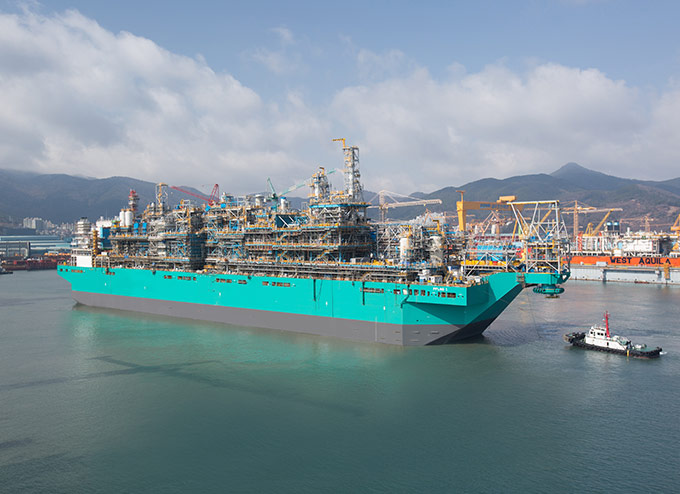Satu FLNG producing offshore Borneo
Petronas will be the first company to export LNG from a floating production unit, beating competitors Shell and Inpex according to Reuters.
Located off the coast of Borneo, Petronas’ Satu facility is currently loading LNG into the 5.1 MMcf capacity Seri Camellia tanker. This will be the first export from a FLNG plant. Constructed in South Korea by DSME, Satu arrived at the Kanowit gas field in May, where it prepared to process gas. First gas was achieved on November 14. LNG was first produced three weeks later. With an estimated cost of $10 billion, Petronas reports that Satu’s total processing capacity is nearly 160 MMcfe/d.
Shell, Inpex also constructing FLNG
Several companies have turned to floating LNG facilities in the last decade to produce natural gas from offshore fields. Shell (ticker: RDS.A) is constructing the Prelude FLNG facility, which will be the largest maritime vessel ever built. Prelude is five times heavier than an aircraft carrier and longer than the Empire State Building is tall.
The ship is estimated to cost more than $12 billion and will produce nearly 700 MMcfe/d of LNG, condensate and LPG. Upon completion, Prelude FLNG will process gas from offshore fields in Australia. According to Reuters, Inpex, a Japanese company, is constructing a FLNG unit that will be nearly as big as part of the development of the Australian Ichthys project.
LNG market supply increasing quickly
Floating LNG facilities are massive undertakings, requiring years of planning and construction. Prelude FLNG, for example, required FID in May 2011 and is still not operational.
The natural gas market, LNG in particular, is in the process of fundamentally changing. Production from Australia and the U.S. is growing significantly, and multiple export facilities are completed or under construction.
In Australia, for example, the Gorgon project is developing the Gorgon and Jansz-Io Fields, with a combined 35 Tcf of reserves. An onshore facility with a capacity of more than 2 Bcf/d will process produced gas into LNG for both export and domestic use.
Numerous LNG plants are currently planned in the U.S. Since Cheniere’s (ticker: LNG) Sabine Pass paved the way. Tellurian’s Driftwood, Sempra Energy’s Cameron LNG and Venture Global’s Calcasieu Pass and Plaquemines terminals are only a few of the proposed export terminals in the United States.



